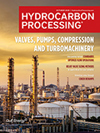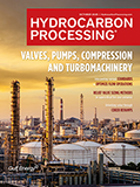Engineering & Design
Mercedes-AMG Petronas to use sustainable carbon fiber composites in Formula 1 racecars
Mercedes announced the first steps on the road towards sustainable carbon fiber composites. In concrete terms, this means that Mercedes will qualify and apply sustainable carbon fiber composites to their race cars during the 2025 Formula 1 season, without sacrificing any on-track performance.
Vopak to build ethane tanks to support Thailand's petrochemical production
Vopak has reached a positive final investment decision it build 160,000-m3 tank infrastructure in Map Ta Phut, Rayong, to support the import of U.S. ethane into Thailand for petrochemical crackers
LNG retrofits surge as maritime industry seeks short-term carbon reduction solutions
A surprising development in 2024 was the resurgence of LNG retrofits as shipowners sought immediate carbon reductions to navigate regulatory requirements. More than 305 LNG-fueled ships were ordered last year, accounting for approximately 14% of newbuilding orders, significantly outpacing methanol and ammonia alternatives.
Indonesia plans to use sovereign wealth fund to boost coal gasification projects
Indonesia seeks to boost coal gasification projects using funding from its newly launched sovereign wealth fund Danantara Indonesia, as well as plans to increase its fuel storage capacity and build a refinery with capacity of 500,000 barrels per day to ensure energy security
MAIRE awarded various EPC contracts, totaling $3.5 B
MAIRE announced that its subsidiaries TECNIMONT, KT-Kinetics Technology and NEXTCHEM and have been granted new awards for a total amount of approximately $3.5 billion for engineering and procurement and construction activities related to petrochemical and hydrotreating projects, as well as high value engineering services for a waste to chemical project.
Taiyo Oil selects Honeywell UOP's ethanol-to-jet technology for 200-MMlpy SAF plant in Japan
Taiyo Oil Co., Ltd. has chosen Honeywell UOP's Ethanol-to-Jet technology to produce sustainable aviation fuel at its Okinawa Operations in Japan. This facility will have a production target of 200 MMlpy.
Digital Feature: The reality of FuelEU in numbers
Today, many owners and managers are concerned with the EU Emissions Trading Scheme (ETS), designed to reduce emissions produced by shipping. However, the author's company's projections show that the impact of FuelEU will eclipse that of the ETS around 2035 and dwarf it beyond that. Business as usual is therefore no longer an option, and progressive decisions must be made to deal with this challenge.
Parker Hannifin joins iHAPC project to test H2 and argon for cleaner and more energy-efficient engine technologies
Led by the University of Vaasa and supported by Wärtsilä under the WISE (Wide and Intelligent Sustainable Energy) program, the project will develop and test a prototype engine that uses hydrogen and argon to achieve a significant efficiency boost.
Hybrid model using first principles and AI/ML for analyzer-less fuel blending
This article discusses first-principle blend model architecture used traditionally by refineries, including its pros and cons. This text also explores the concept and trend of using artificial intelligence and machine-learning hybrid models for blending for cases where online analyzers may not be installed or may be nonfunctional, sometimes causing quality giveaways and violations.
Improve reliability with predictive maintenance insights
Machine-learning-equipped advanced analytics platforms empower SMEs to solve some of the toughest process problems efficiently, implement effective process improvements, transition from reactive to predictive maintenance strategies, increase productivity and uptime, and operate more profitably.

- Asian gasoline margin spikes to highest since August 2023 11/14
- Lukoil-Moldova grants free use of airport fuel terminal to government amid U.S. sanctions 11/14
- Croatia rejects Russian vacuum gasoil cargo after U.S. sanctions 11/14
- Bulgaria wins UK sanctions reprieve on refinery, petrol stations 11/14
- China's Sinochem shuts one crude unit at Quanzhou after fire 11/14
- Enbridge approves $1.4-B project to boost Canadian oil flows to U.S. refiners 11/14




